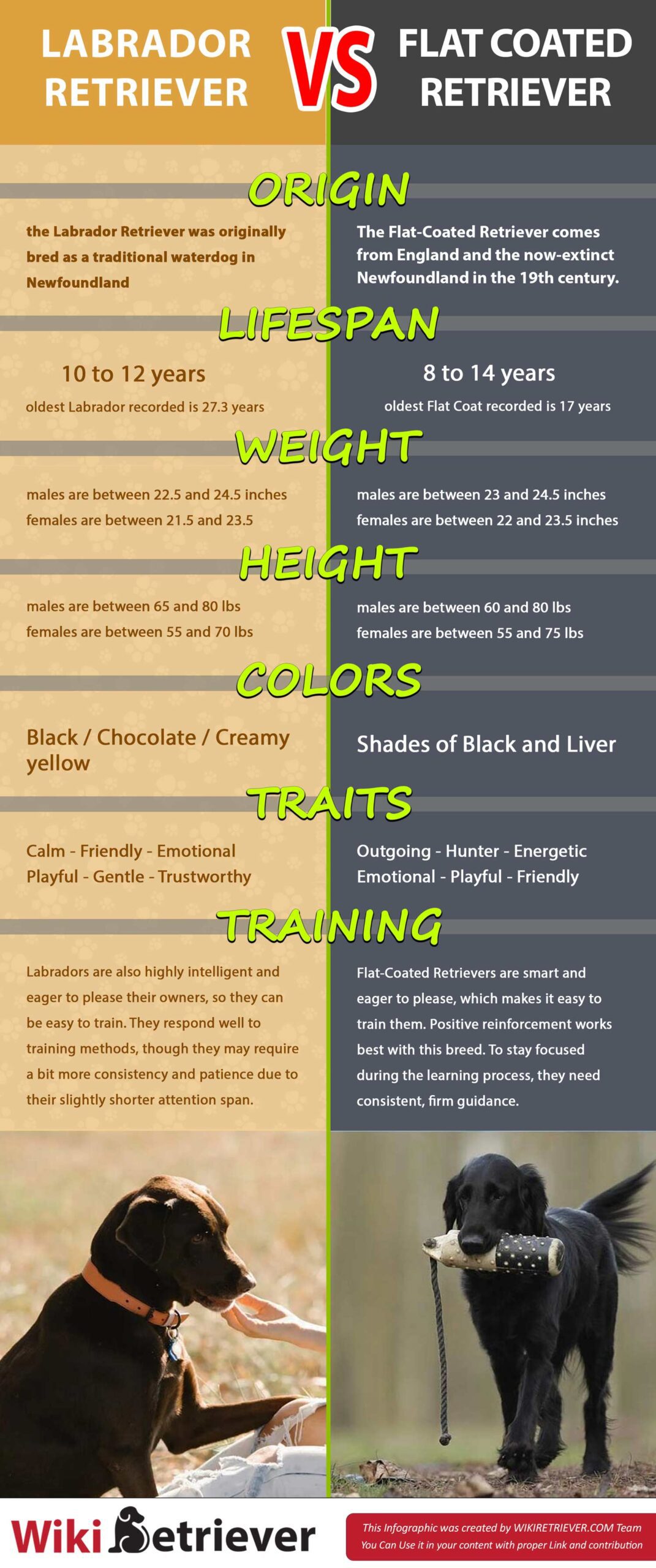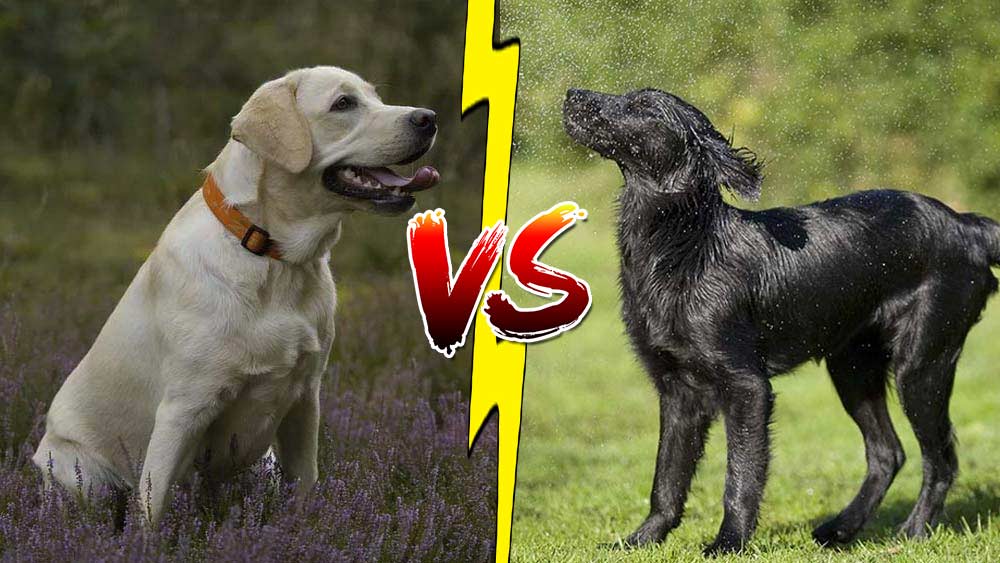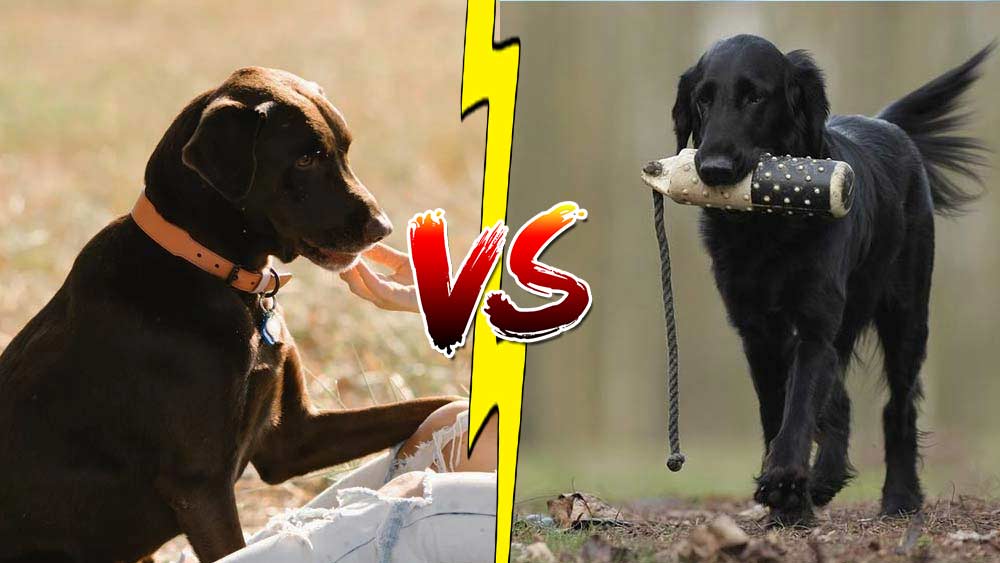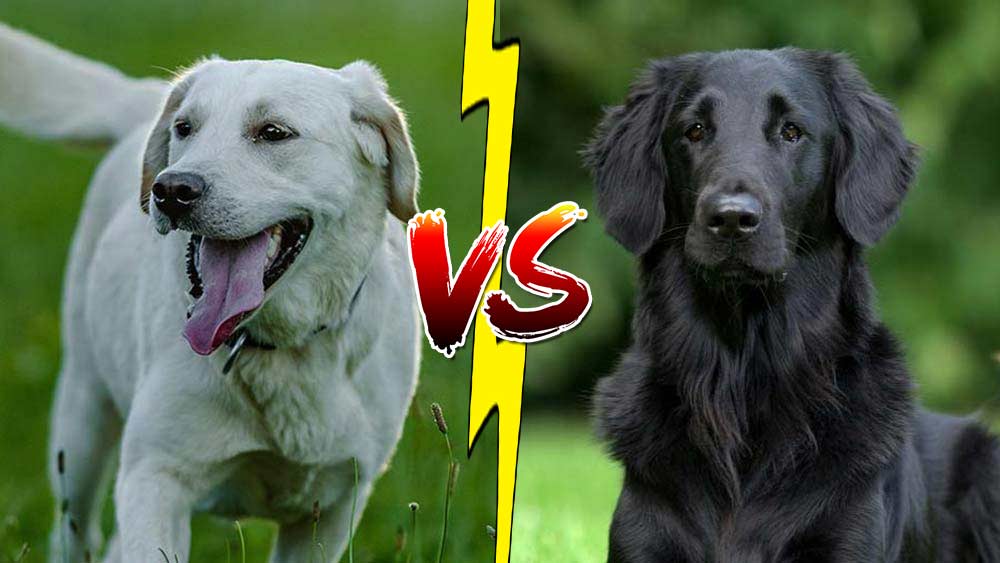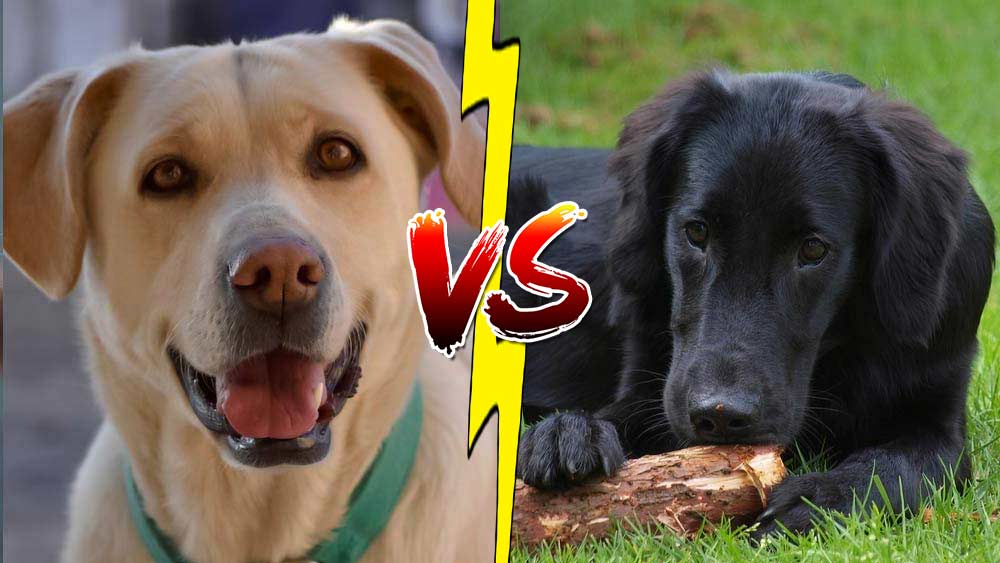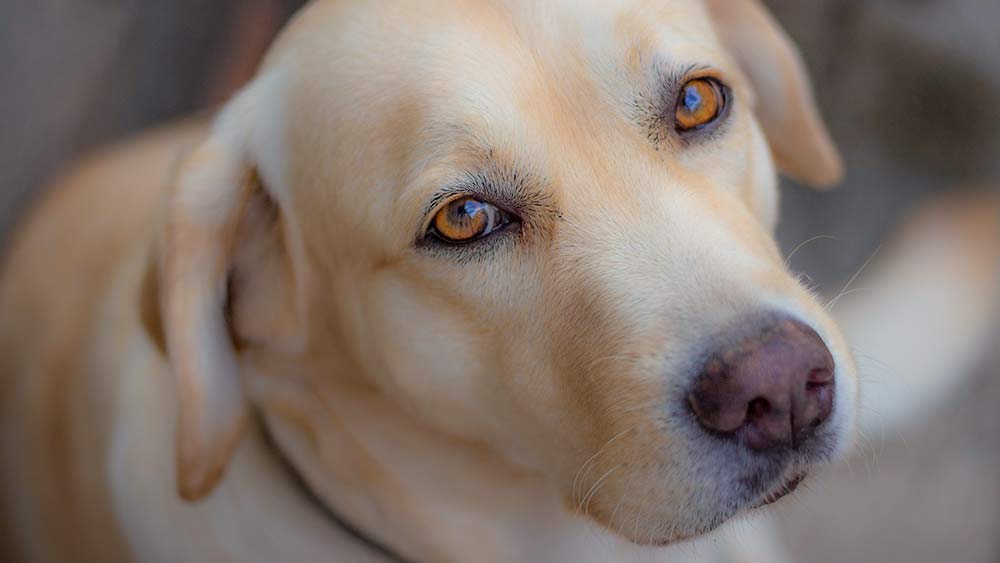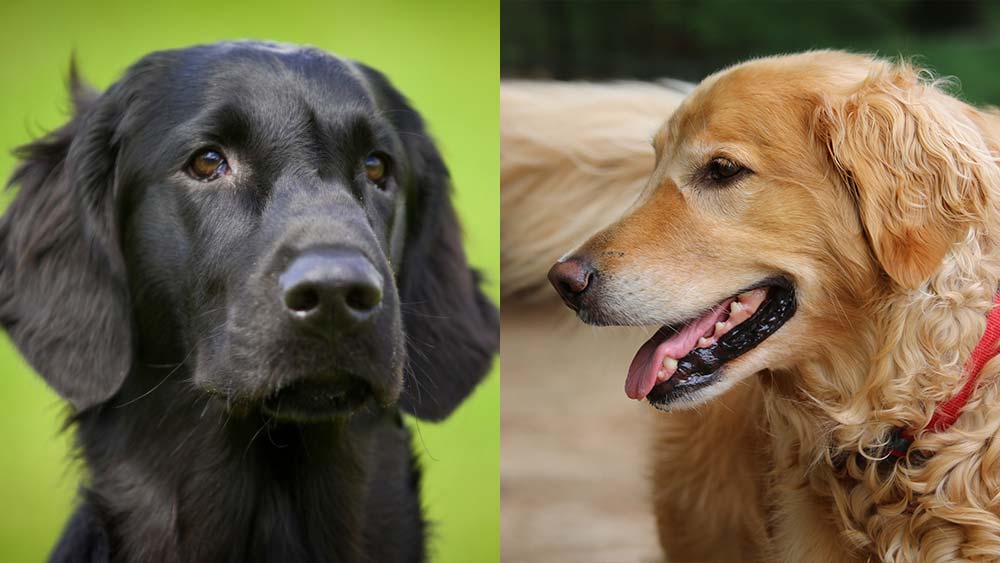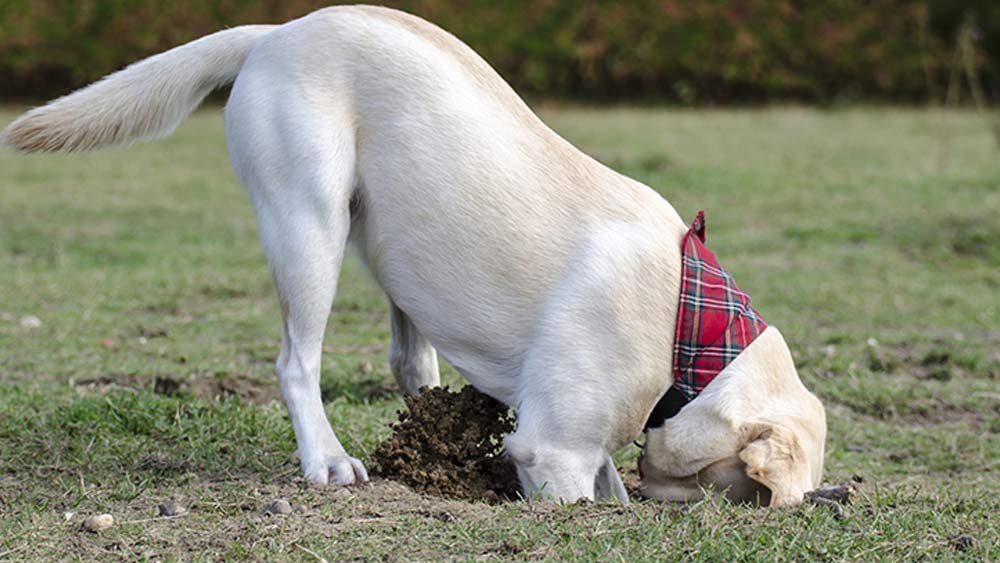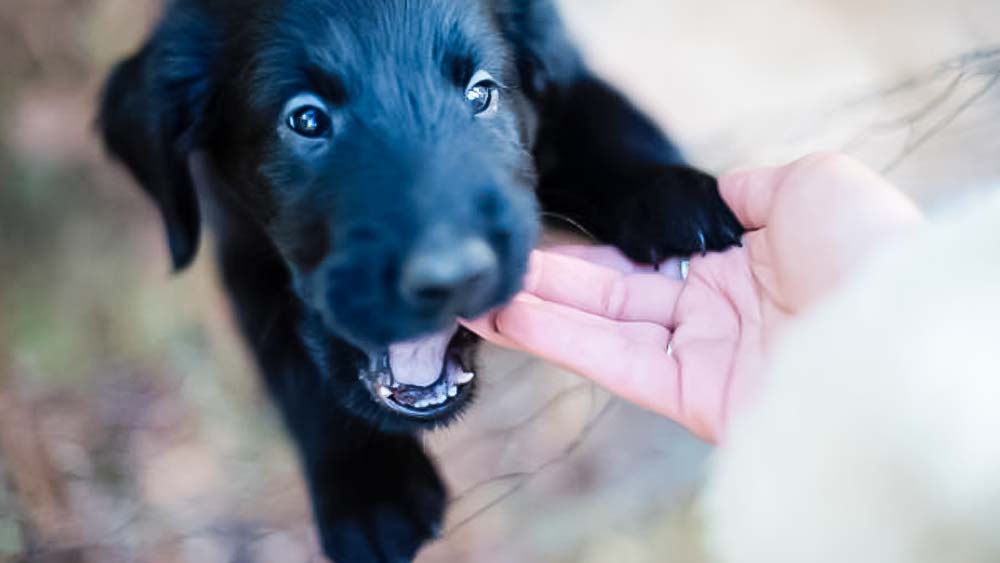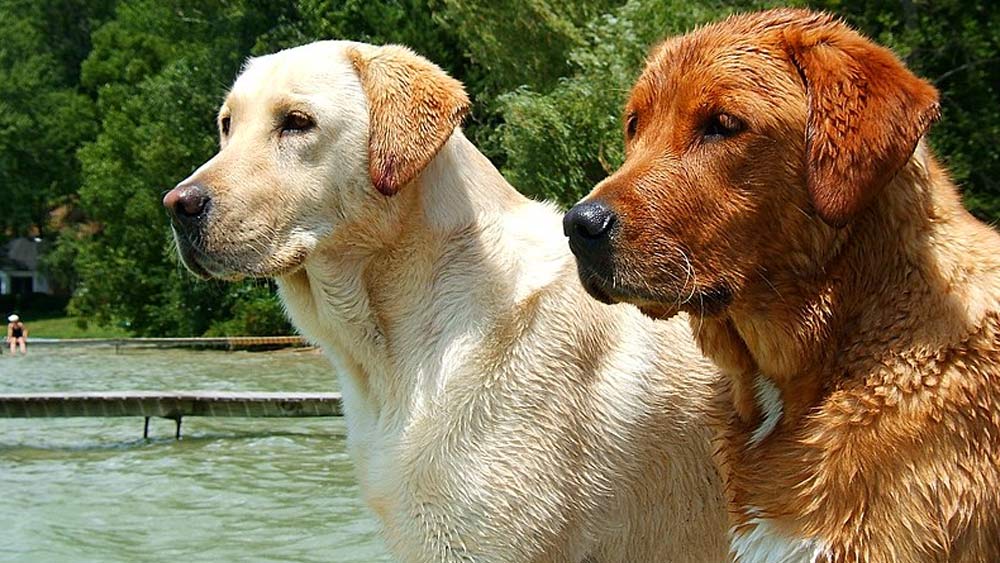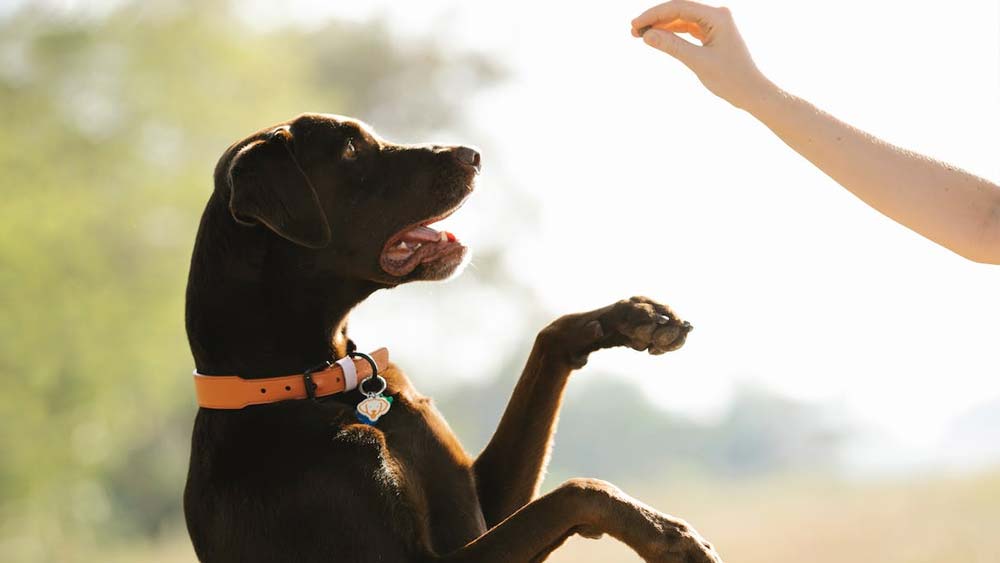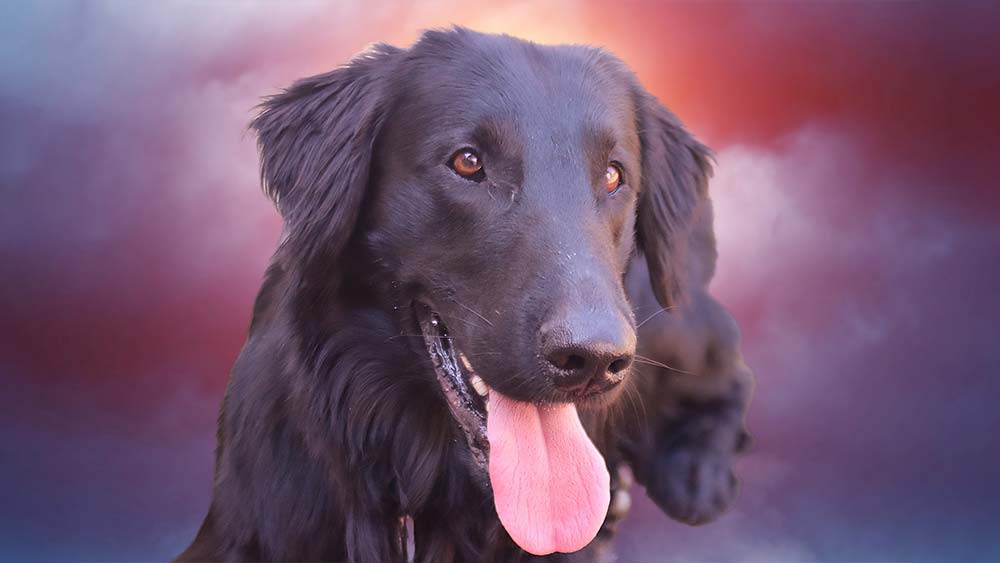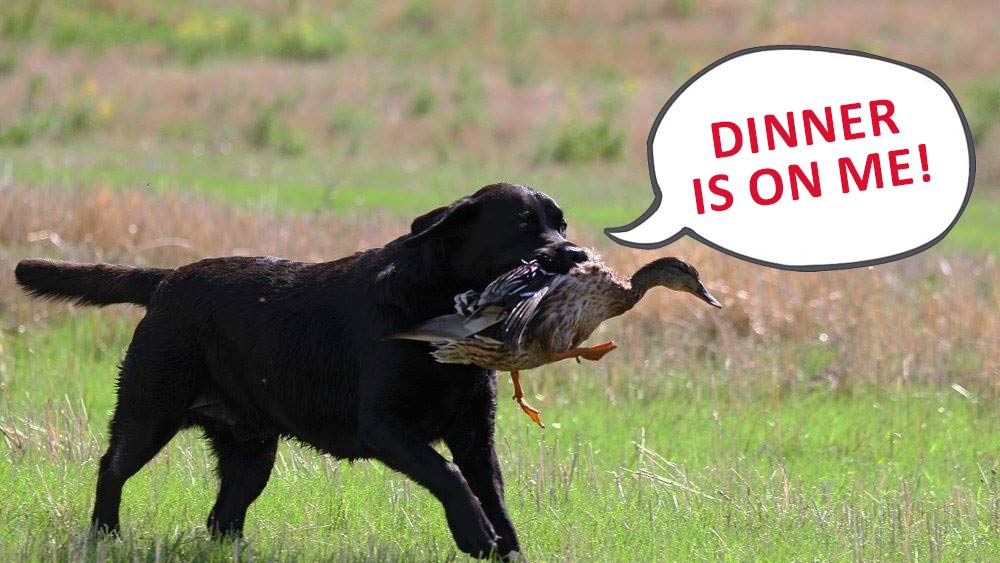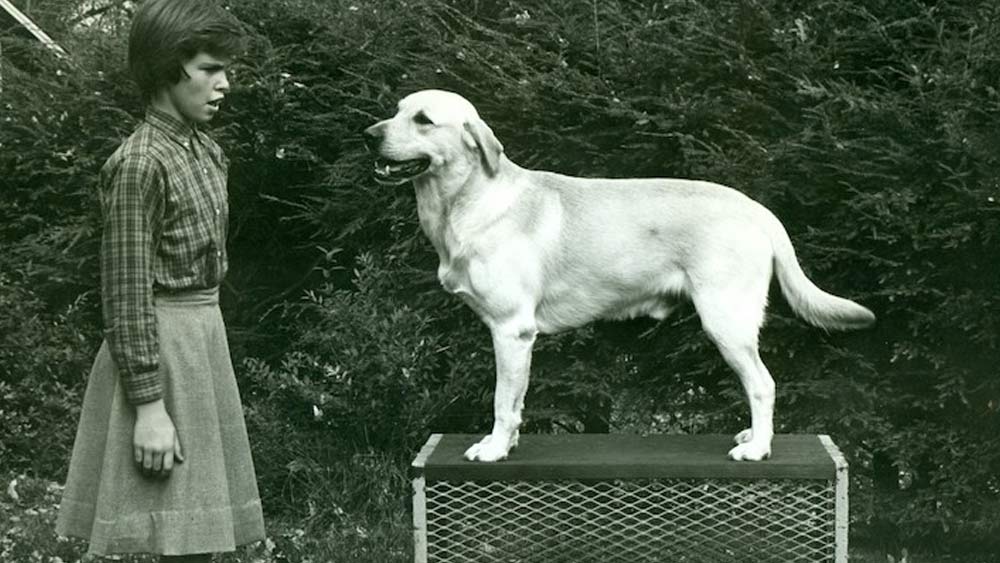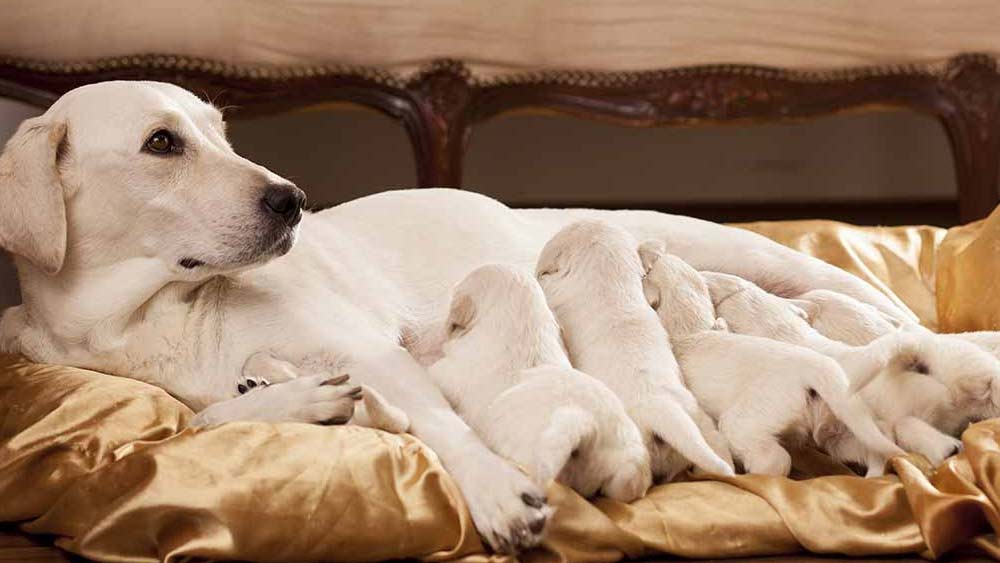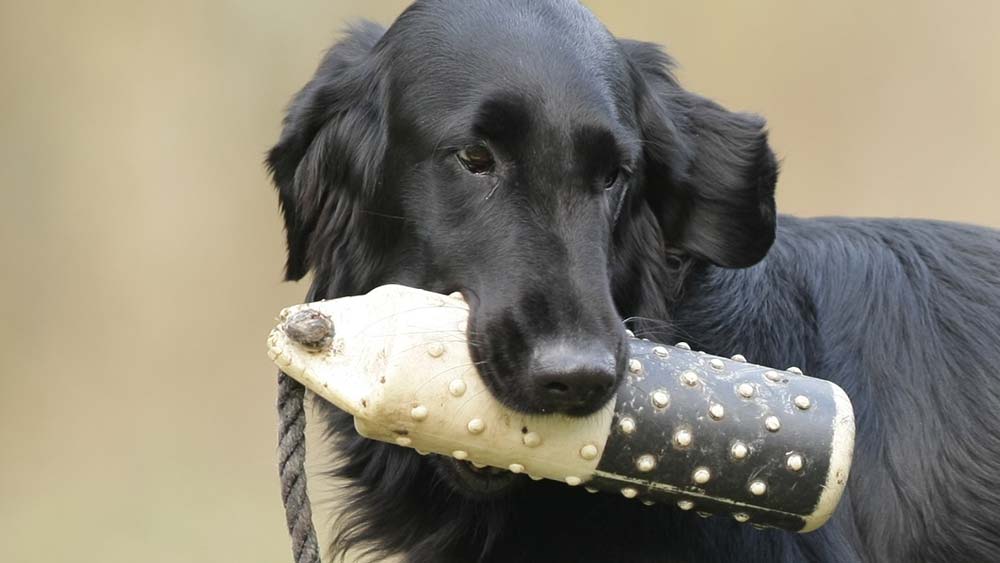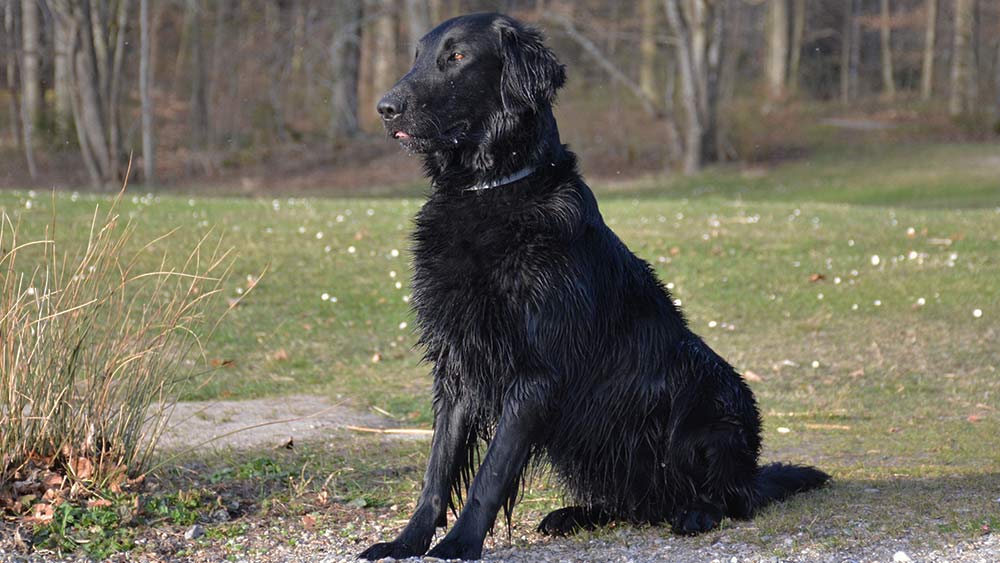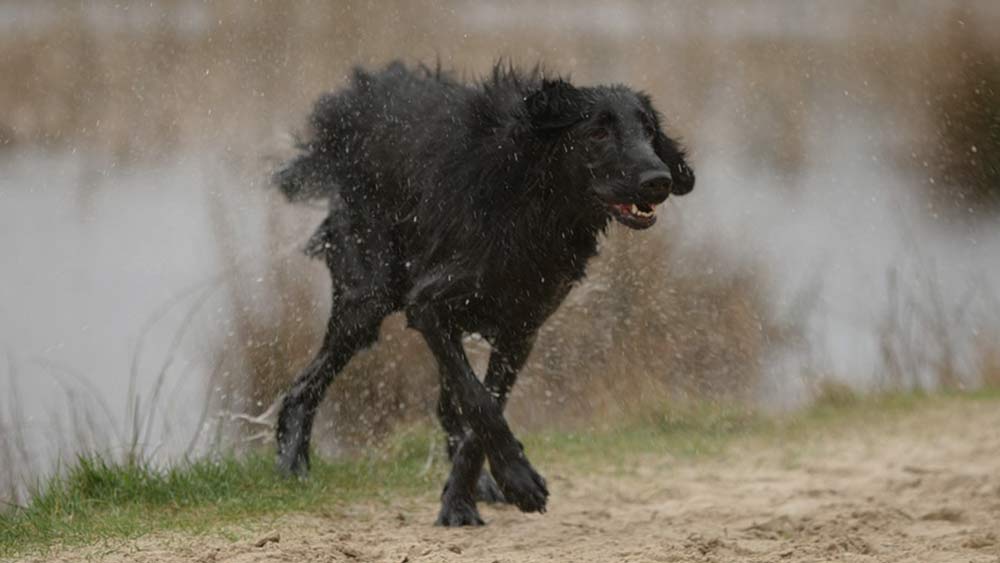The average Labrador is slightly heavier, bulkier but shorter than a flat coated retriever. Both of them are super friendly, trustworthy family pets. Lab coat colors are cream, black, and chocolate, and flats coat colors are shades of black and liver. Flat coated retrievers have a higher prey drive than Labradors. Both are easily trainable.
Labrador vs Flat-Coated Retriever: Breakdown + Infographic
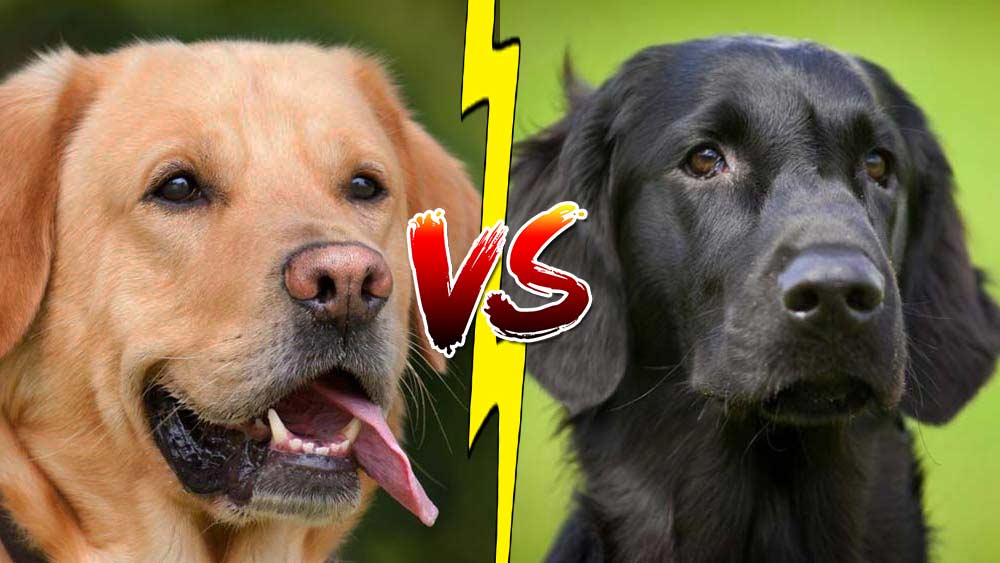
Are you trying to decide between a Labrador retriever and a flat-coated retriever?
Both are popular breeds, but they have distinct histories and characteristics that make them unique.
In this article, we’ll explore the differences between these two breeds in depth so you can make an informed decision when choosing your new pup.
We’ll discuss each breed’s history, physical traits, temperaments, and other key factors that should be considered when deciding which is right for you.
So read on to learn more about Labradors and Flat-Coats!
this infographic will explain to you the major differences of flat coated vs Labrador retrievers
Labrador retriever history
Labrador Retrievers, which today are highly popular among dog enthusiasts, were initially found across the northern border of America in the province of Newfoundland, Canada.
Therefore, we can consider Newfoundland as the first breeding ground for Labrador Retrievers.
flat-coated retriever history
From the late 1980s to the early 20th century, the Flat-Coated was the best breed for shooting ranges and vast hunting grounds.
This breed performs well in chasing and guarding. They can perform several different roles.
In 1864, smooth-coated dogs, compared to retriever breeds, were introduced to the wealthy British, who were highly skilled at hunting.
Labrador vs flat-coated retriever: Physical Appearance
Although Flat-Coated Retrievers and Labrador Retrievers have similar body Sizes, their physical appearance has some interesting differences.
Labrador Retriever: The average adult Labrador stands 21.5–24.5 inches tall with a weight range of 55–80 pounds.
They have an athletic build with a thick tail that often curves up when they’re running or playing.
Their coat is short and dense, either black, yellow, or chocolate in color.
Flat-coated Retriever: The average adult Flat-Coated Retriever stands 22–24.5 inches tall with a weight range of 60–70 pounds.
They have an athletic build with a long tail that often curves up when they’re running or playing.
Their coat is straight, dense, and shiny, with a black or liver color and an occasional white patch here or there.
Labrador vs flat-coated retriever: Breed Colors
Labrador Retriever: Labradors come in three official colors: black, yellow, and chocolate.
Black Labs are generally solid black with no other markings on their coats.
Yellow Labs can range from light cream to dark golden yellow.
chocolate Labs range in the shade from light milk chocolate to dark brown.
Labradors can also have white markings on their chest and feet, but this is not a requirement or desired trait for the breed.
Read More: Labrador retriever Types : (0 to 100 Explained)
Flat-Coated Retriever: Flat-Coated Retrievers can have either a black or liver (a reddish-brown) color to their coat.
Black Flat-Coats are solid black in color, while Liver Flat-Coats can range from light brown to dark chocolate.
Flat-Coated Retrievers may also have a white patch on their chest or feet, but this is not a requirement or desired trait for the breed.
Labrador vs flat-coated retriever: Temperament
Labrador Retriever: The Labrador Retriever is known for its intelligence, loyalty, and calm demeanor.
They can be easily trained due to their high intelligence but have lower energy levels than the Flat-Coated Retriever.
Labradors are very social and need a lot of human interaction to stay happy and healthy.
They’re also usually quiet, rarely barking unless they’re excited.
Flat-coated Retriever: The Flat-Coated Retriever is known for its loyalty, intelligence, and energy.
They love to please their humans but may not be suitable for novice dog owners due to their intelligence, energy levels, and high prey drive.
They’re also very social, so they need lots of interaction with other people or pets to stay happy and healthy.
They do bark on occasion for no apparent reason.
Note: Flat-coated retrievers are energetic and active dogs that thrive on human companionship.
They are highly intelligent, eager to please and make excellent family pets.
Labradors are also very intelligent but have different energy levels than flat-coated retrievers; they prefer a more relaxed environment with regular exercise rather than an active lifestyle.
Both breeds need plenty of activity, interaction, and attention from their owners to stay happy and healthy.
Labs are generally considered to be better around small children due to their calmer nature.
Both breeds can suffer from anxiety or aggression if not properly socialized at a young age, so owners must commit to early training and socialization when adopting either breed of dog.
Read More: 19 Ways to Encourage Good Behavior in Your Puppy
Labrador vs flat-coated retriever: Care Requirements
Labrador Retriever: Labrador Retrievers require 1+ hours of exercise daily, weekly brushing, routine grooming visits (every 6–10 weeks), and obedience training.
They have a thick double coat that sheds heavily twice a year – the “coat blow” – making them higher maintenance than their flat-coated counterparts.
Read More: Having a Labrador as a Pet: Pros & Cons
Flat-coated Retriever: Flat-Coated Retrievers require 1+ hours of exercise daily, weekly brushing, routine grooming visits (every 4–8 weeks), and obedience training.
They are known to shed lightly, making them a low-maintenance breed regarding grooming needs.
both labradors and flat coated retrievers need grooming because they are shedders. they are not considered hypoallergic dogs
Labrador vs flat-coated retriever: Training Requirements
Labrador Retriever: Labrador Retrievers are also highly intelligent and eager to please their owners, so they can be easy to train.
They respond well to positive reinforcement-based training methods, though they may require a bit more consistency and patience due to their slightly shorter attention span.
Labradors excel in obedience sports such as agility and rally, as well as in hunting scenarios.
Read More: how to train your Labrador Retriever: 15 most essential tips
Flat-coated Retriever: Flat-Coated Retrievers are highly intelligent and eager to please, so training them is relatively easy.
Positive reinforcement methods work best with this breed; they need consistent, firm guidance to stay focused during the learning process.
They excel in the field and hunting scenarios as they have a high prey drive.
Labrador vs flat-coated retriever: Health Issues
Labrador Retriever: they tend to live a bit longer, between 10 and 12 years.
They are prone to common health issues like elbow dysplasia and hip and eye problems (such as progressive retinal atrophy).
Unfortunately, cancer is also quite common in this breed, with one of the highest rates among all breeds.
Lymphoma or lymphosarcoma is a type of cancer that afflicts Labrador Retrievers more than other breeds.
Flat-Coated Retriever: they may have a much shorter life span but fewer health problems.
In general, they live between 8 and 14 years. Cancer, which can take many forms, is the most common problem with this breed.
They may also have joint problems like hip dysplasia and a kneecap that slips out of place, which is common in larger breeds.
Read More: 21 Common Dog Diseases (and What To Do)
Read More: 15 Signs That Its Time To Visit The Vet Immediately
Labrador vs flat-coated retriever: Family Friendliness
Labrador Retriever: Labs are known for being laidback and gentle, which makes them great family pets.
They’re also patient and tolerant, so they do well with kids of all ages.
With proper training and socialization, Labradors can also be great around other animals.
All in all, a Labrador Retriever makes an excellent family companion that is sure to bring love and joy into any household.
Flat-coated Retriever: Flat-Coats are good with children but need to be supervised when around smaller kids.
They tend to be too rambunctious, so it’s best not to leave them alone unsupervised with young ones.
This breed is like a soldier and guardian and is very loyal to its owners and families.
They need proper consistent obedience training to keep their high prey drive in check so they won’t go and chase down squirrels or the neighbor’s cats or birds.
Labrador vs flat-coated retriever: Hunting Skills
Labrador Retriever: Labradors are also good hunting dogs, though they may take longer to train than Flat-Coats.
They have a strong natural drive to retrieve prey and can be trained for various types of hunting, including ducks, upland birds, and waterfowl.
Their intelligence and adaptability make them great hunting partners.
With the right training, Labradors can be skilled retrievers and have the energy to cover large areas in a hunt.
Flat-Coated Retriever: they truly excel when it comes to hunting, whether it’s retrieving prey or navigating a field.
Their intelligence and eagerness to please make them excellent students of their owner’s commands.
Not only are they quick learners, but they are also renowned for their athleticism and endurance in the field.
They can withstand harsh environments and temperatures.
Read More: Are Labrador retrievers good hunting dogs? (0 to 100 explained)
Labrador vs flat-coated retriever: Service Dog Skills
Labrador Retriever: Labradors have been used successfully as service dogs for decades.
They are empathetic and loyal animals that excel in various service dog tasks.
They have the energy and stamina to complete long work days, and their intelligence makes them ideal candidates for training complex commands.
Labrador Retrievers are often used as assistance, therapy, and emotional support animals.
Flat-Coated Retriever: Flat-Coats are not commonly thought of as service dogs, but they have the potential to be trained for this purpose.
They are highly intelligent and loyal, making them great candidates if you’re looking for a companion that can assist with everyday tasks.
Flat-Coats may require a bit more intensive and consistent training, but with the right guidance, they can learn to be alert and respond quickly to their handler’s commands.
Labrador vs flat-coated retriever: Which is Best for You?
Ultimately, the choice between a Labrador Retriever and a Flat-Coated Retriever comes down to personal preference and lifestyle.
The Flat-Coated Retriever may be ideal if you’re looking for an active dog with plenty of energy and a high prey drive.
If you’re looking for a loyal and intelligent companion who prefers more relaxed activities, the Labrador Retriever is your best bet.
Whichever breed you choose, make sure to commit to early training and socializing them with both people and other dogs to get the most out of your pup.
Conclusion
In conclusion, Labrador Retrievers and Flat-Coated Retrievers are both excellent canine companions with unique qualities that make them special.
Whether you’re looking for an active hunting partner or a loyal family companion, either breed can fit the bill, depending on your lifestyle.
Ultimately, the best way to choose between these two breeds is by researching their individual characteristics and deciding which one best fits your needs.
No matter which breed you decide on in the end, be sure to commit to early training and socialization so that you can get the most out of your pup!
Read More: Golden vs. Labrador retriever & 10 main differences
Read More: Flat-Coated Retriever VS Golden Retriever: Compared In Depth
Read More: Labrador Retriever vs Husky: all the info u need!
Wiki Retriever is a band of brothers and Pet Lovers!
All of our team have dogs, cats, and birds. Right now we have 6 dogs, 3 cats, and 2 grey parrots!
We Are A Family, Get to Know US!
More Similar Posts
You might also like

